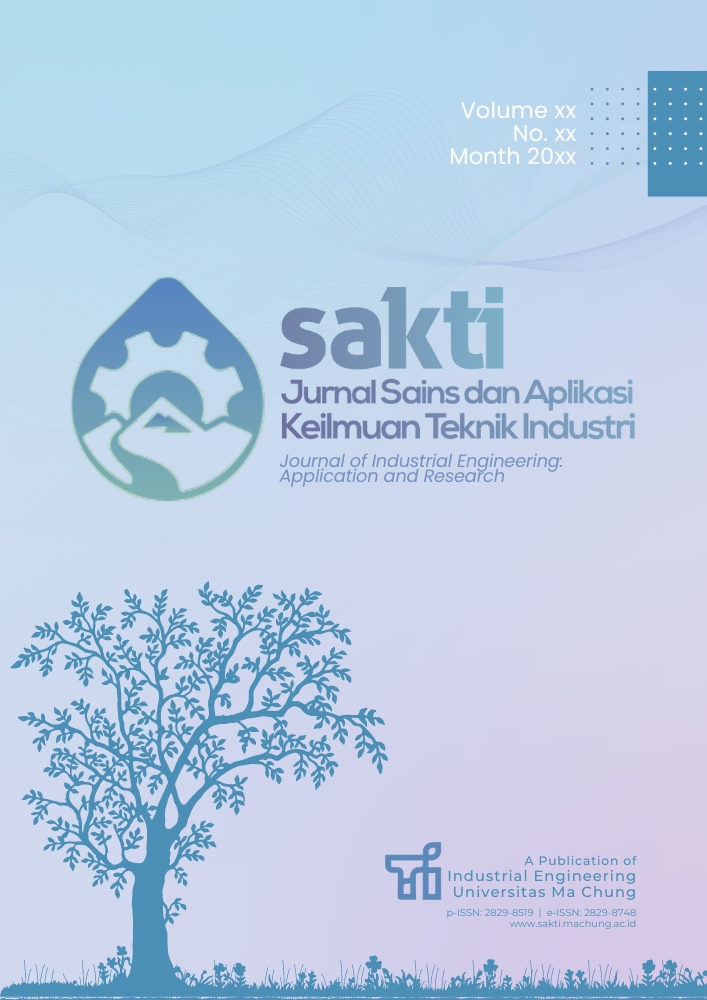Usulan Perbaikan Laboratorium Komputer Universitas Ma Chung pada Aspek Suhu dan Pencahayaan dengan Pendekatan Ergonomi Partisipatori
DOI:
https://doi.org/10.33479/jtiumc.v2i2.32Keywords:
Comfort, Computer laborator, Lighting, Participatory ergonomic, TemperatureAbstract
This study focuses on assessing the comfort of students when using computer laboratories at Universitas Ma Chung, particularly in terms of temperature and lighting. Using the participatory ergonomic approach, a comfort questionnaire was administered to students, with a total of 13 questions covering three indicators: room temperature, room lighting, and LCD. The questionnaire results were then tested using validity, reliability, and normality tests. The findings reveal that temperature and lighting do indeed have an impact on the level of comfort experienced by students when using a computer laboratory. These results have implications for campus facilities management and suggest the need for improvements to the temperature and lighting conditions in computer laboratories to enhance the comfort and well-being of students. By using the participatory ergonomic approach, this study provides valuable insights into the importance of considering user comfort in the design and management of campus facilities.
References
Anam, K., Seotomo., & Alfathan, A. (2017). Kajian intensitas penerangan pada gedung electrical power system simultaor sekolah tinggi penerbangan Indonesia. Jurnal Ilmiah Aviasi Langit Biru, 10(1), 1-86.
Asnawir, H. (2002). Media pembelajaran. Jakarta: Ciputra Press.
De Jong., A.M., & Vink, P. (2002). Participatory ergonomics applied in installation work. Applied Ergonomics, 33(5), 439-448. https://doi.org/10.1016/S0003-6870(02)00033-9
Gunawan., & Ananda, F. (2017). Aspek kenyamanan termal ruang belajar gedung sekolah menengah umum di wilayah Kec. Mandau. Jurnal Inovtek Polbeng, 7(2), 98-103. https://doi.org/10.35314/ip.v7i2.211
Janti, S. (2014). Analisis validitas dan reliabilitas dengan skala likert terhadap pengembangan SI/TI dalam penentuan pengambilan keputusan penerapan strategic planning pada industri garmen. Prosiding Seminar Nasional Aplikasi Sains & Teknologi (SNAST) (pp 155-160). Yogyakarta: IST Akprind.
Nurmianto, E. (2008). Ergonomi: konsep dasar dan aplikasinya (2nd ed). Surabaya: Guna Widya.
Pane, F, E, S. (2012). Analisis pengaruh suhu ruangan dan intensitas pencahayaan terhadap kecepatan respon konsentrasi dan tingkat stress pada siswa sekolah dasar [Unpublished Undergraduate Thesis]. Universitas Indonesia.
Thompkins, J, A., White, J, A., Bozer, Y, A., & Tanchoco, J, M, A. (2010). Facilities planning (4th ed). USA: John Wiley & Sons, Inc.
Yulianto, D. (2012). Identifikasi tingkat kepuasan pelanggan dan penentuan tingkat kinerja pada kualitas pelayanan BST Dampri dengan menggunakan analisis servqual-indeks dan fuzzy [Unpublished Undergraduate Thesis]. Universitas Muhammdiyah Surakarta.
Downloads
Published
How to Cite
Issue
Section
License
Copyright (c) 2022 Jurnal Sains dan Aplikasi Keilmuan Teknik Industri (SAKTI)

This work is licensed under a Creative Commons Attribution-NonCommercial-NoDerivatives 4.0 International License.









